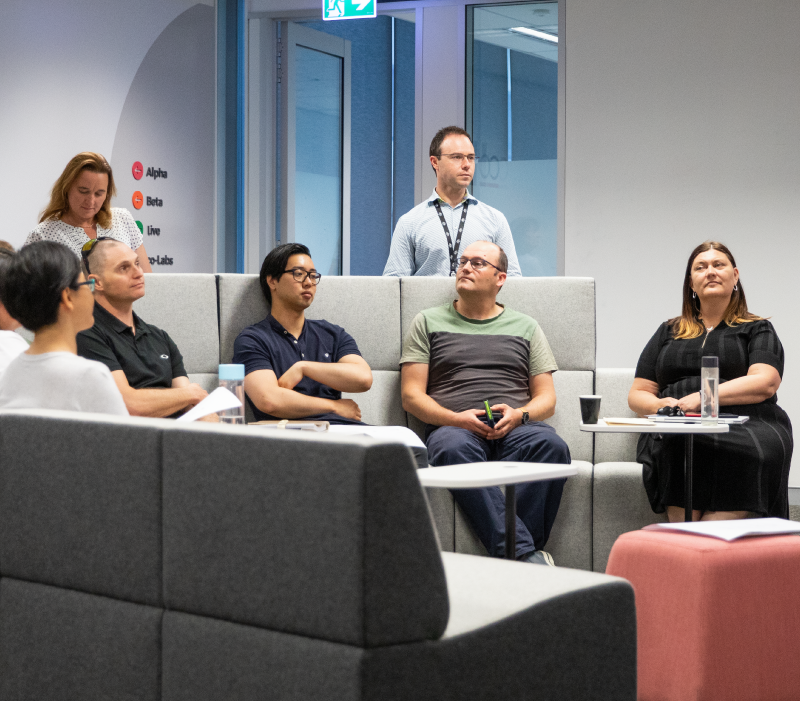-
Guidance and resources
- Digital Performance Standard Guidance
- Digital and ICT Investment Oversight Framework
- Data and Digital Government Strategy
- Australian Government Architecture
- Digital Service Standard
-
-
-
Your responsibilities
To successfully meet this criterion, agencies need to:
- define clear objectives and goals, based on users’ needs
- identify and choose relevant metrics that align with organisational goals, meet Digital Performance Standard criterion and capture the user experience
- articulate how you will implement the monitoring framework
- develop processes for continuous digital service improvement and share insights.
When to apply
Apply Criterion 1 during Discovery of ICT investment planning and as part of your continuous improvement processes in the Live environment.
We recognise agencies have different digital and ICT capabilities. The Digital Performance Standard sets out application approaches based on the maturity of your monitoring framework. Every agency should work towards applying best practice monitoring and reporting methods. At a minimum, your agency should implement a monitoring framework that focuses on providing digital service outcomes based on user experience and feedback.
As best practice, agencies should implement a monitoring framework that embeds user-centric performance monitoring across all your informational and transactional services.
Questions for consideration
- What are the online needs and expectations of the users?
- How does the framework fit into the strategic landscape?
- What resources are required for successful implementation and maintenance of the monitoring framework?
- How can baseline metrics be established to understand the current state of digital performance and facilitate future comparisons?
How to apply criterion 1
-
Digital Performance Standard
The Digital Performance Standard (Performance Standard) sets the requirements for monitoring the performance of digital government services. It enables agencies to measure service effectiveness, understand user needs, and continuously improve the quality of digital experiences.The Performance Standard establishes a consistent approach to reporting and analysis, supporting data-driven decision-making and helping to embed performance management into everyday digital service delivery.
The Performance Standards builds upon Criterion 9- Monitor Your Service of the Digital Service Standard. It ensures that agencies collect and share meaningful performance data to improve outcomes for people and business.
The Performance Standard aligns with the Australian Government’s Data and Digital Government Strategy, which puts people and business at the centre of digital government services.
The Performance Standard is part of a broader suite of guidance that supports the Digital Experience Policy. This whole-of-government policy aims to improve the digital experience for people and business, and includes supporting standards for inclusion, performance, and access.
-
The criteria
The Performance Standard consists of 5 criteria.
Each criterion is accompanied by:
- an explanation of its purpose
- your responsibilities in meeting it
- when it should be applied within the Service Design and Delivery Process
- suggested activities to apply it
- further resources and guidance.
-
-
Downloadable resources
-
Criterion 2 – Measure the availability of your digital service
-
Deliver reliable and seamless digital experiences so users can access digital services when they need to.
-
Your responsibilities
To successfully meet this criterion, agencies need to:
- identify the most appropriate measure to monitor availability
- monitor the availability of the digital service based on expected user outcomes
- act to improve user outcomes.
-
When to apply
Apply Criterion 2 in the Live environment and consider it during Discovery. Collate metrics and monitor your digital service with a holistic approach. Report your results to build government’s view of its digital services landscape.
The Digital Performance Standard sets the expectation that at a minimum agencies should measure uptime to monitor the availability of the digital service, in line with the industry-standard approach. Where your agency has a mature monitoring framework in place, a more user-centric, comprehensive monitoring approach should be implemented as best practice.
Applying Criterion 2 should focus on the end-user experience to promote continuous improvement of your digital service.
Off -
Questions for consideration
- Can users access the digital service as intended?
- How does your agency currently monitor digital service availability?
- What story might the digital service availability metrics tell you?
- What service improvements are necessary?
-
Guidance and resources
- Digital Performance Standard Guidance
- Digital Service Standard
- GOV UK – Monitoring the status of your service
-
-
Connect with the digital community
Share, build or learn digital experience and skills with training and events, and collaborate with peers across government.





